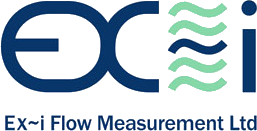In 2014, there were 47 ships running on liquid natural gas (LNG). By 2018 another 48 will have joined the fleet. LNG is a cleaner and cheaper alternative to other fuels, which would under most circumstances make it the top choice. However, problems with refuelling mean its use is not as widespread as expected. Currently, the only options for fuelling ships is through ship-to-ship fuelling or shore-to-ship fuelling, both of which present substantial drawbacks. But now Titan LNG, an LNG provider based in Amsterdam, is in the process of creating an alternative refuelling option in the form of an LNG bunkering pontoon.
The Need for a New LNG Fuelling Solution
So, what are the pros and cons of existing refuelling methods?
Ship-to-Ship
A large proportion of LNG-powered ships are fuelled using bunkering vessels. Size limitations in some ports, however, mean that only smaller bunkering vessels can operate in them. Port safety restrictions also apply because LNG is considered a hazardous cargo. However, one of the benefits of this refuelling method is that bunkering vessels are generally flexible with their fuelling locations. Unfortunately, they are not as flexible in their usage. Being only able to carry fuel and, with just a small number of LNG-powered ships, bunkering vessels are expensive to run.
Shore-to-Ship
Ports themselves offer LNG fuelling, primarily through truck deliveries, although some ports in Norway, for instance, offer pipeline fuelling directly into berths. This type of fuelling is fast and offers a high capacity. However, some ships are simply too large or deep to take advantage of shore-to-ship fuelling and some would have to make lengthy detours to reach ports which offer LNG.
The LNG Bunkering Pontoon
The Titan LNG Flex-Fueler, currently under development, will be the first LNG bunkering pontoon in North West Europe delivering LNG to both sea-going and river vessels in ports in the Amsterdam – Rotterdam – Antwerp region, Europe’s largest bunkering hub. It will be 70 metres in length and have a capacity of up to 1200 cubic metres. The pontoon is intended to have a fixed location to supply inland waterway vessels, but will also be moveable to supply larger sea-going vessels with fuel while they load and unload their cargo. Fuel to fill the pontoon’s tanks can be taken from trucks, pipelines or other vessels.
“Currently, truck-to-ship delivery provides the most flexibility, and is the only means of receiving LNG bunkers in the ARA region,” explains Niels den Nijs, Commercial Director of Titan LNG. “However, there is an increase in larger LNG-fuelled vessels coming into the market, which cannot bunker at land-based LNG stations, as the deviation costs are too high or is simply not an option due to draft restrictions”.
Currently, Titan LNG is in the fabrication stage of developing the pontoon, with plans to launch it in 2018. It will operate out of the main port in Amsterdam but will also be able to be push-towed to Rotterdam, where it is expected to replace truck deliveries of LNG in the area.
To find out how Ex~i Flow Measurement could help your LNG operation, call +44 (0)1243 554920.
